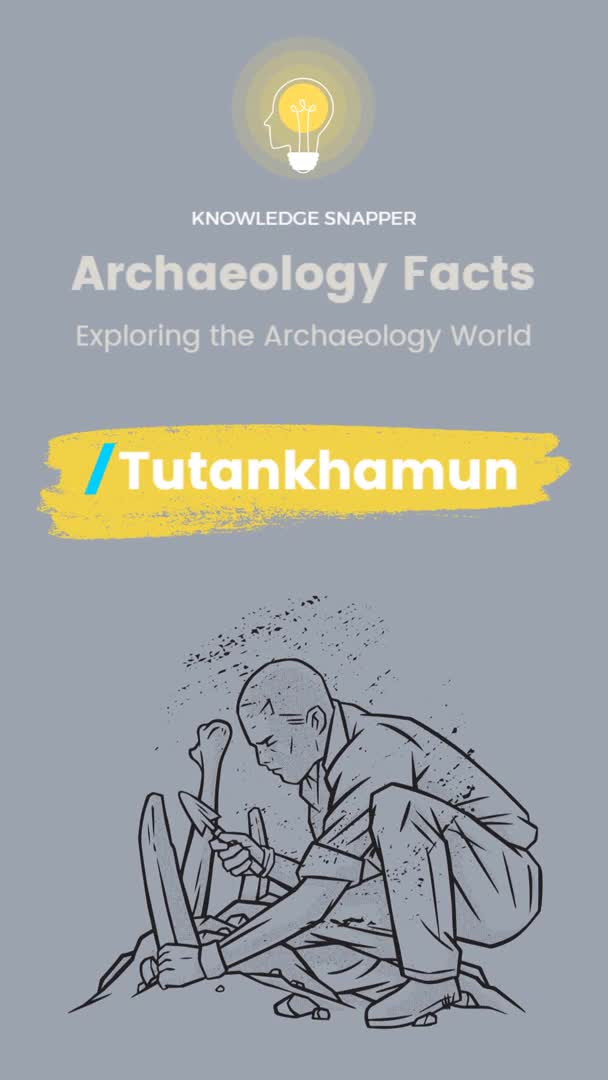Unveiling the Mysteries of Tutankhamun: A Journey Through Ancient Egypt

Have you ever been captivated by the treasures of ancient Egypt and the mysteries surrounding its most famous pharaoh? The tomb of Tutankhamun, discovered in 1922 by the archaeologist Howard Carter, is one of the most significant archaeological finds in history. It revealed extraordinary artifacts and provided insights into the life of this young king. In this blog post, we uncover five fascinating facts about the tomb of Tutankhamun that will ignite your curiosity and transport you back to a time when pharaohs ruled the sands of Egypt.
The Discovery That Captivated the World
In the Valley of the Kings, nestled amid the arid Egyptian landscape, lay a treasure unparalleled in its grandeur and historical significance. The tomb of Tutankhamun was largely intact when Carter and his team discovered it. Unlike other royal tombs subject to ancient plundering, this find was a rare jewel, sparking intrigue and fascination worldwide.
"The tomb of Tutankhamun, largely untouched by looters, stands as an incredible time capsule, allowing us insight into the opulence of royal life and the meticulous planning for the afterlife in Ancient Egypt."
Diving Inside the Tomb: Over 5,000 Artifacts
Upon entering the tomb, Carter uncovered a treasure trove of more than 5,000 artifacts. These included majestic pieces like the iconic golden mask of Tutankhamun, which has become a symbol worldwide of ancient Egypt's splendor. The mask, with its captivating polish and intricate detail, tells stories of craftsmanship and artistry that historians revel in sharing.
A Unique Layout Tailored for a Young Pharaoh
The tomb’s structure is unlike others, marked by a unique layout comprising four main rooms, including a burial chamber and a treasury. These rooms reflect Tutankhamun's wealth and status, despite his brief nine-year reign. The design of the tomb provides insight into burial customs and religious beliefs of the time.
“The layout and content of the tomb not only celebrate the life and reign of Tutankhamun but also serve as a reminder of the societal beliefs in the afterlife that permeated through the cultural fabric of ancient Egypt.”
Craftsmanship That Speaks of a Golden Era
The artifacts showcase stunning craftsmanship—jewelry and chariots that speak of opulence and skill, furniture designed with meticulous attention to detail—each item a testament to the life and times of the 18th Dynasty, shedding light on the cultural and artistic practices of the period.
The Worldwide Fascination with Egyptology
The excitement and fascination sparked by this discovery continue to draw people to Egypt, leading to research and preservation efforts. This legacy reminds us that archaeology is not merely about uncovering the past; it is about shaping our understanding of human history and culture.
Conclusion: A Portal to the Past
The tale of Tutankhamun's tomb reaches far beyond its historical significance—it bridges a gap through time, inviting us to delve deep into the rich and textured tapestry of ancient Egyptian civilization. The discovery remains a cornerstone of Egyptological studies and a testament to human curiosity and the relentless pursuit of knowledge.
Thus, the tomb of Tutankhamun stands as a key not only to the ancient past of Egypt but to our continued exploration of the world’s shared history. Stay tuned for more intriguing knowledge that will expand your understanding of this fascinating world.

.jpg)
Comments
Post a Comment